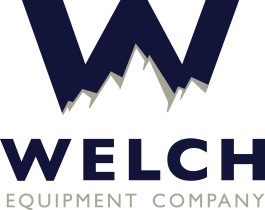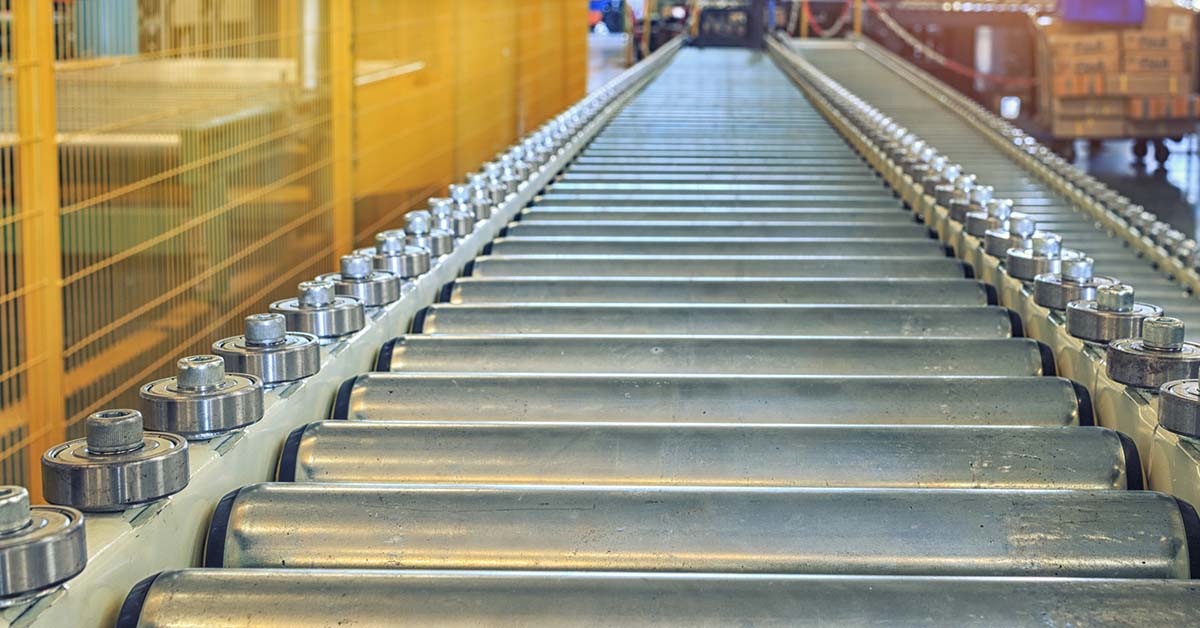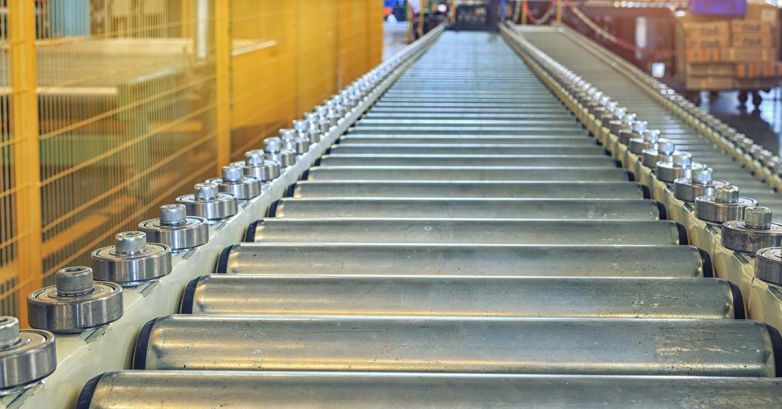Conveyors and automated storage and retrieval systems can elevate the efficiency of your Albuquerque storage operations, strengthen safety practices and significantly reduce human resource costs.
Modern conveyors can move everything from lightweight cartons to heavy pallets throughout your material handling system and they are a fundamental piece of modern material handling design.
Conveyors can be grouped in three different categories for most material handling systems:
- Powered roller or belt conveyor systems (for carton handling)
- Powered roller or chain conveyors (for pallet handling)
- Non-powered systems
Powered Package Handling Roller or Belt Conveyors
Powered belt or roller conveyors are often used for less bulky pieces like cartons and packages.
Conveyor belts are mostly employed for advancing cartons along a line, while roller conveyers are employed for collecting packages in certain areas along the line.
Conveyor Belts
In use since the early 1900’s, belt systems are a fundamental part of most material handling operations. Less expensive than roller systems and frequently better suited to certain tasks like moving lightweight products, belt systems are used in many material handling designs.
Belt systems utilize a long, looped belt that sits atop a series of non-powered rollers on a metal substructure called a slider belt. Motor driven pulleys turn the belt and move items down the conveyor line.
Betl systems are configured with an assortment of surfaces and materials in accordance with the purpose and role of the conveyor. To illustrate, a belt surface may be un-ridged in segments where items need to glide off the line and may have a gripping surface on segments where goods have to be transported up slopes.
Roller Conveyors
While belt conveyors still have a place in most operations, newer roller systems feature a number of advantages in many modern material handling applications.
Principal among these, roller systems can allow for collection of objects on the line where belt conveyors cannot. This is an important distinction because there are countless scenarios where objects must hold and accumulate in material handling configurations. Accumulation processes are often used when products must be temporarily halted before being forwarded to sorters or palletizers.
Many roller conveyor systems also have the capability to supervise items on the line and implement zero pressure accumulation, meaning none of the products collecting on the line come into contact as they decelerate and come to a stop.
Roller designs feature a series of cylindrical rollers that are usually powered in one of these ways:
- Line-shaft conveyors: in a line shaft system, a long tubular shaft runs underneath the cylinders at a right angle to them and is joined to each roller with flexible O-rings. A motor rotates the shaft, and thereby rotates the cylinders via the connected O-rings.
Line-shaft systems are the least costly of all roller conveyers, but they can also demand the most service because the connections between the rollers and the shaft tend to need adjustment and occasionally break. - Belt-driven roller conveyors: As the name suggests, these systems are driven by a belt mechanism that lies underneath the roller platform. A motor propels the belt, which advances the cylinders.
- MDR conveyors: Motorized roller conveyors, sometimes called motor-driven roller (MDR) systems, are built in segments where one cylinder from each segment is propelled by it’s own motor. That one motor-driven cylinder is connected to the adjacent rollers in that segment via rubber O-rings, thereby powers all the cylinders in the segment. Powered segments are placed in succession to configure the conveyor line.
Motorized roller conveyors are known for their energy efficiency because: a.) they generally are powered by 24V direct current motors and b.) the motors can be configured to engage only when an object is detected on the cylinders, meaning they are inactive much of the time.Although MDR conveyors are more expensive than belt drive and line-shaft systems, energy costs and maintenance expenses are typically quite a bit lower than the other options mentioned. - Segmented belt conveyor: the concept of motor driven roller systems eventually begat the idea of segmented belt conveyors. Similar to motor driven roller conveyors, segmented belts function individually and offer several of the same advantages of motor driven rollers, including accumulation capacity.
Powered Pallet Handling Conveyors
Powered pallet-handling conveyors are frequently used with palletizers and automatic storage and retrieval systems. Pallet handling conveyors can generally deal with loads of up to 2 tons and operate at a far slower rate than package handling systems, many times at speeds of two to four pallets per minute.
Pallet-handling conveyors come in two types: chain conveyors and roller conveyors.
- Pallet-handling chain conveyor: perhaps the most basic of all conveyors, pallets on a chain conveyor line sit directly on two or more lengths of heavy duty chain. Motors propel the chain segments which consequently move the pallets along the line.
- Pallet-handling roller conveyor: analogous to motor driven roller systems, pallet handling roller conveyors use large cylinders and sturdy chains to join the powered cylinder to the remaining rollers in a conveyor unit.
Non-Powered Conveyors
Roller or skatewheel conveyors are the most prevalent types of non-powered conveyors used in material handling. These types of systems use gravity or inertia to move smaller loads though warehouses, pick modules, automated sorters, workstations, loading docks and package sorting areas.
Skatewheel conveyors are made up of numerous independent wheels and need very little energy to sustain the inertia of items as they advance along a conveyor line. On the whole, they advance objects faster than non-powered roller configurations and they have more flexibility when it comes to setup. Given that they’re standalone wheels as opposed to a belt, they can be used in curvilinear sections of a conveyor arrangement.
Typically non-powered roller configurations are less costly than skatewheel conveyor systems. They’re often utilized for work stations, pick modules, and other areas where it’s beneficial to maintain a flat platform to work on. Roller systems also decelerate items that are coming from faster moving mechanisms like sorters so that employees can keep up with conveyor output.
Both types of non-powered conveyors have a distinct handicap compared to powered conveyors: by using gravity and inertia to move products you can’t control the force applied to those products. In other words, you don’t have influence on the speed and inertia of materials on your line.
Conveyor Companies Near Me
If you’d like a complete evaluation of conveyor system options for your storage facility, distribution center or other material handling operation, talk to a professional at Welch Equipment.
Welch Equipment Company
5830 Midway Park Blvd NE
Albuquerque, NM 87109
(505) 822-8043
Serving Alamogordo, Albuquerque, Carlsbad, Clovis, Farmington, Hobbs, Las Cruces, Rio Rancho, Roswell, Santa Fe, South Valley and surrounding areas.




